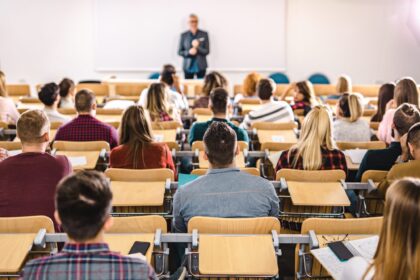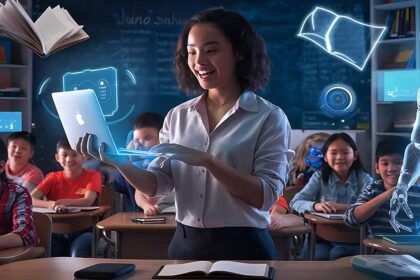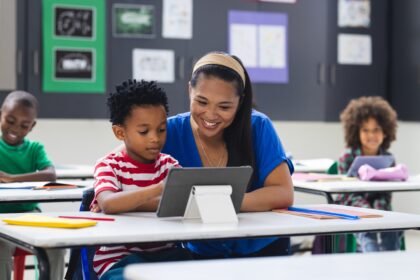The world of education is undergoing a profound transformation. With the rapid advancement of technology, shifting societal expectations, and evolving job markets, the traditional model of education is being reimagined. No longer confined to the four walls of a classroom, education is now a dynamic, personalized, and globally connected experience. This article delves into the trends and innovations that are reshaping classrooms around the world, helping students develop the skills needed for success in the 21st century.
1. The Shift to Personalized Learning
Personalized learning has moved to the forefront of education trends as one of the most significant shifts in recent years. Rather than applying a one-size-fits-all approach, personalized learning tailors education to the individual needs, skills, and interests of each student. The goal is to enhance the learning experience, ensure better student engagement, and ultimately improve outcomes.
1.1. Technology-Powered Personalization
One of the key enablers of personalized learning is the use of technology. With adaptive learning platforms, artificial intelligence (AI), and data analytics, teachers can now track individual student progress in real time and adjust learning plans accordingly. Platforms like Khan Academy, DreamBox, and Smart Sparrow use algorithms to identify learning gaps and provide targeted resources and practice exercises to help students progress at their own pace.
1.2. Benefits of Personalized Learning
- Tailored Pacing: Students can learn at their own pace, spending more time on areas they find challenging while advancing quickly in areas they have mastered.
- Targeted Feedback: Personalized learning provides timely feedback, allowing students to understand their strengths and weaknesses and make adjustments.
- Increased Engagement: When students have control over their learning paths, they are more likely to stay engaged and motivated.
1.3. Challenges of Personalized Learning
Despite its potential, implementing personalized learning at scale is not without challenges. It requires significant investment in technology and teacher training. Additionally, ensuring equitable access to personalized learning tools for all students remains a critical issue, especially in low-income regions.
2. EdTech: The Role of Technology in Transforming Education
Educational technology (EdTech) is one of the most transformative forces in modern education. With tools that range from learning management systems (LMS) to virtual classrooms, AI-based tutoring to interactive simulations, technology is not just enhancing the learning experience; it’s revolutionizing the very way we teach and learn.
2.1. Artificial Intelligence and Machine Learning
AI and machine learning are being integrated into classrooms in increasingly sophisticated ways. AI-powered tools can offer real-time feedback, automatically assess students’ progress, and provide personalized learning paths. AI is also being used for grading, administrative tasks, and predictive analytics, giving teachers more time to focus on instruction and student engagement.
- AI Tutors: AI-powered tutoring systems, like Squirrel AI and Carnegie Learning, adapt to students’ unique learning needs, offering personalized exercises and practice based on their strengths and weaknesses.
- Grading Automation: AI-based tools are helping automate grading, allowing teachers to focus on more personalized student interactions.
2.2. Augmented Reality (AR) and Virtual Reality (VR)
AR and VR are creating immersive learning experiences that were once unimaginable. By 2025, AR and VR will likely become standard components of classrooms. Virtual field trips, interactive 3D simulations of historical events, and virtual science labs are just a few examples of how AR and VR are changing education.
- Virtual Labs: VR enables students to perform experiments and engage in practical learning without the need for a physical lab.
- Immersive Learning: AR allows students to interact with digital information in the real world, such as using AR apps to explore 3D models of planets, animals, or human anatomy.
2.3. Cloud-Based Learning Platforms
Cloud-based platforms like Google Classroom, Microsoft Teams, and Moodle have become essential tools for remote and hybrid learning, enabling students to access resources and collaborate seamlessly from any location. These platforms support the sharing of resources, real-time communication, and even peer-to-peer learning.
- Collaboration Tools: Cloud-based platforms allow students and teachers to collaborate more effectively through shared documents, real-time discussions, and group projects.
- Accessibility: Cloud platforms provide access to learning materials from any device with internet connectivity, reducing barriers related to location or device limitations.
2.4. Gamification and Game-Based Learning
Gamification, the use of game elements such as points, leaderboards, and rewards in educational contexts, is gaining popularity as a method to increase student engagement and motivation. Game-based learning platforms, like Kahoot! and Classcraft, create interactive, competitive environments that encourage active participation.
- Engagement and Motivation: Game mechanics like points, rewards, and competition can make learning fun and motivate students to keep progressing.
- Skill Development: Game-based learning can help students develop critical thinking, problem-solving, and decision-making skills in a low-pressure environment.
3. The Rise of Hybrid and Remote Learning
The COVID-19 pandemic accelerated the adoption of online and hybrid learning models. However, as we move forward, it’s clear that these models will not only remain relevant but will continue to evolve. Hybrid learning—combining in-person and online education—offers the flexibility and scalability that traditional education often lacks.
3.1. Hybrid Learning Models
Hybrid learning allows students to attend classes in person while accessing additional learning materials online. The blend of face-to-face interaction with the flexibility of digital learning creates an environment that can cater to a diverse range of learning styles and needs.
- Flexible Learning: Hybrid models enable students to choose when and where they want to engage with certain content, promoting self-directed learning.
- Equity in Education: Hybrid learning ensures that students in different regions or those with disabilities can access educational content, leveling the playing field.
3.2. Remote Learning Solutions
Remote learning is still a significant part of education worldwide, especially in regions with limited access to traditional schooling. Innovations like live-streamed classes, pre-recorded lessons, and online assessments have made it possible to deliver high-quality education remotely.
- Access to Global Resources: Remote learning can connect students to global experts and resources that they might not have access to in a traditional classroom setting.
- Global Collaboration: Students in different parts of the world can collaborate and engage with diverse perspectives, broadening their understanding of global issues.
3.3. Challenges of Hybrid and Remote Learning
While hybrid and remote learning offer immense flexibility, they also come with challenges such as technological barriers, social isolation, and the need for self-discipline among students. Ensuring that both teachers and students are adequately prepared and equipped for remote learning is crucial.
4. The Emphasis on Social and Emotional Learning (SEL)
In recent years, there has been a growing recognition of the importance of emotional intelligence, mental health, and social skills in education. As automation and artificial intelligence take over more technical tasks, the ability to understand and manage emotions, collaborate effectively, and communicate persuasively will become increasingly valuable.
4.1. SEL in the Classroom
Social and Emotional Learning (SEL) programs help students develop skills such as empathy, self-awareness, emotional regulation, and interpersonal communication. Schools are incorporating SEL into their curricula to support students’ overall well-being and equip them with the tools to navigate complex emotional and social challenges.
- Mental Health Support: Schools are investing in programs that promote mental health and resilience, aiming to reduce stress and anxiety among students.
- Building Strong Relationships: SEL fosters positive relationships between students and teachers, helping to create supportive and inclusive learning environments.
4.2. The Impact on Career Readiness
As industries increasingly prioritize soft skills such as teamwork, emotional intelligence, and adaptability, SEL plays a key role in preparing students for the modern workplace. By 2025, there will likely be a greater focus on integrating SEL with academic curricula to help students thrive both personally and professionally.
5. The Future of Education: What’s Next?
As we look toward the future, it’s clear that the evolution of education will be driven by a combination of technology, pedagogy, and a focus on holistic development. Here are some key trends we can expect by 2025:
- Lifelong Learning: The rapid pace of technological change means that continuous learning will become the norm. Educational institutions will increasingly offer flexible and modular courses that allow individuals to reskill and upskill throughout their careers.
- AI-Powered Classrooms: AI will be embedded deeper into classrooms, assisting teachers in identifying learning gaps, personalizing instruction, and enhancing student engagement through interactive tools.
- Global Education Networks: As education becomes more digital and connected, students will have access to a vast array of learning resources and networks. Cross-border collaborations, virtual classrooms, and global projects will be more commonplace.
6. Conclusion: Embracing a New Era of Education
The education landscape is rapidly changing, driven by technological advancements, new pedagogical approaches, and an evolving understanding of how students learn best. As we move toward 2025, personalized learning, the integration of EdTech, the rise of hybrid learning models, and a renewed emphasis on social and emotional development will all play critical roles in transforming classrooms worldwide.
The future of education promises to be more accessible, flexible, and globally connected, offering students opportunities to learn in ways that were once unimaginable. By embracing these trends and innovations, educators can better prepare students for success in a world that is becoming increasingly digital, interconnected, and dynamic.





